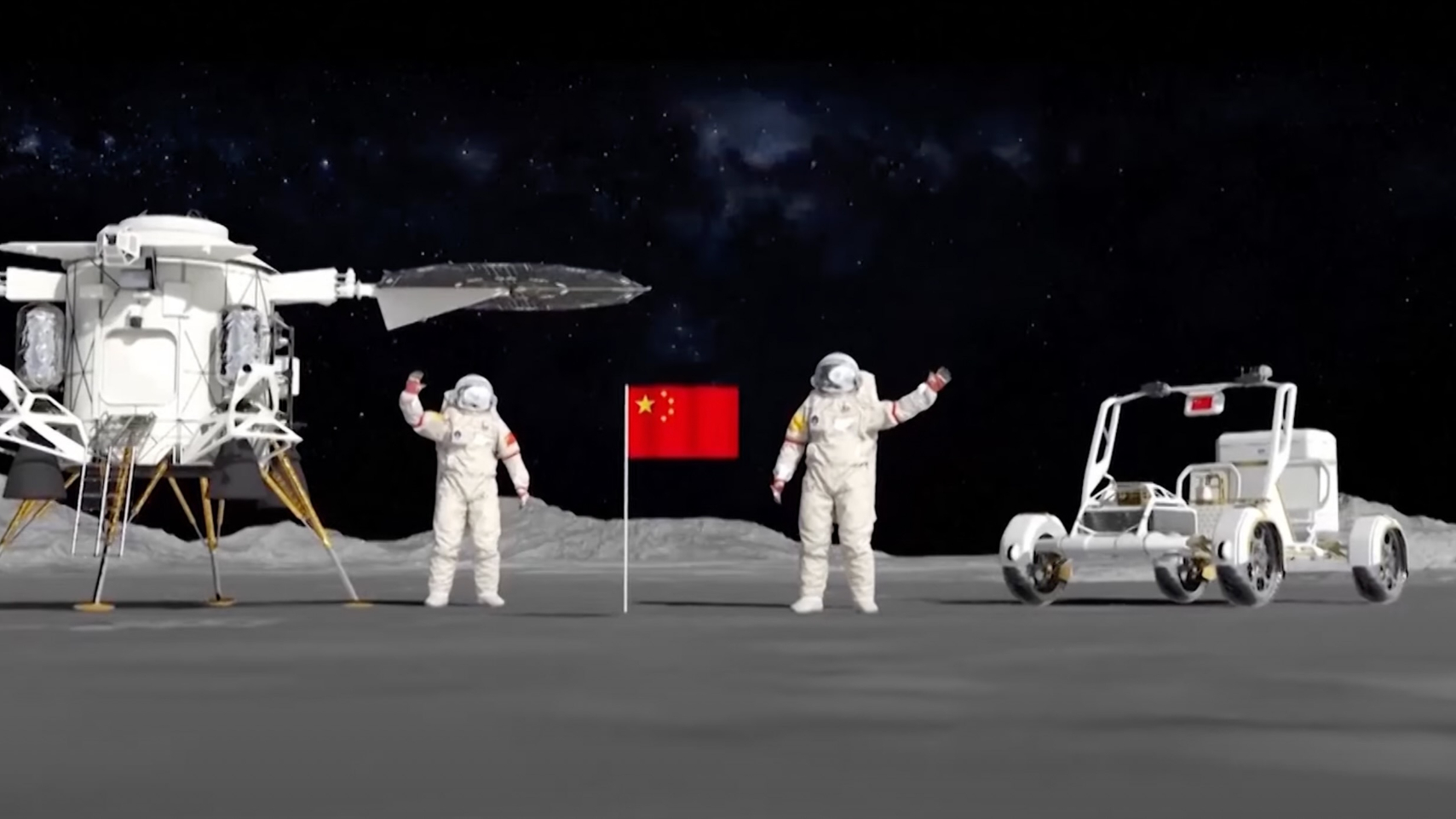How China plans to put astronauts on the moon by 2030 (video)
The promotional video shows animations of planned activities and tests on the hardware that will make them possible.

China's human spaceflight agency has released a video detailing its plans for a first crewed mission to the moon, including progress on lunar hardware.
The promotional video, published by the China Manned Space Agency (CMSA) on Nov. 21, shows not only animations of planned activities but also tests on hardware being developed to make the moon mission possible.
China's moon landing is planned to take place before 2030. It will involve two launches of the Long March 10 rocket, currently being developed, separately sending a crewed spacecraft, named Mengzhou, and a lunar landing stack, named Lanyue, into lunar orbit. There, the two spacecraft will dock and a pair of astronauts will transfer to Lanyue and descend to the lunar surface.
The video shows Lanyue on the moon with a lunar rover being deployed onto the surface. It then shows the astronauts operating the rover and driving along planned routes.
Related: How China will land astronauts on the moon by 2030
Also shown are a hotfire test of a Long March 10 first stage, a parachute deployment test during an airdrop, a separation test using a Lanyue prototype test article, the lunar extravehicular suit that will be worn by the astronauts and work on a Mengzhou crew spacecraft along with other ground tests and facilities.
Finally, the video shows a diagram detailing what the Wenchang Satellite Launch Center on Hainan island will look like when ready to host the lunar mission launches. Wenchang is China's only coastal spaceport and hosts launches of the country's current largest rocket, the Long March 5 series. The spaceport is being expanded to be capable of launching the larger Long March 10 and the future Long March 9 super heavy-lift launcher, which will look a lot like SpaceX's Starship.
Get the Space.com Newsletter
Breaking space news, the latest updates on rocket launches, skywatching events and more!
Meanwhile, NASA is working on returning its astronauts to lunar surface for the first time since the end of the Apollo program. If all goes according to plan, that will happen with the Artemis 3 mission in late 2026.
Join our Space Forums to keep talking space on the latest missions, night sky and more! And if you have a news tip, correction or comment, let us know at: community@space.com.

Andrew is a freelance space journalist with a focus on reporting on China's rapidly growing space sector. He began writing for Space.com in 2019 and writes for SpaceNews, IEEE Spectrum, National Geographic, Sky & Telescope, New Scientist and others. Andrew first caught the space bug when, as a youngster, he saw Voyager images of other worlds in our solar system for the first time. Away from space, Andrew enjoys trail running in the forests of Finland. You can follow him on Twitter @AJ_FI.
-
Unclear Engineer Interesting that China plans to put a "lunar landing stack" into lunar orbit with a second rocket. So presumably, the descent stage will not be reusable. I wonder if the ascent stage will be reusable. That would probably require in-space refueling, which does not seem to be part of their plan.Reply
That contrasts with the U.S. plan, which is betting on SpaceX being able to refuel in space and set up a more reusable process for supporting a lunar habitat.
But the last paragraph about U.S. plans, especially the last sentence, "If all goes according to plan, that will happen with the Artemis 3 mission in late 2026," seems strained considering how slowly that program has been progressing.
There is increasing media reporting of people expecting "Artemis" to be cancelled, too.
But, Artemis is a multinational program, not just the NASA SLS rocket. Why not just cancel the SLS on the basis that SpaceX will be able to do the same things better and with less government expense? Of course, we would want to make sure that is true, first.









